2014 Capstone Celebration Symposium
PLU Chemistry Department
April 28th to May 2nd, 2014
Join the Chemistry Department to hear the senior capstone presentations. Student presentations will occur Monday through Friday. The schedule of talks with more details is given below.
[ Monday | Tuesday | Wednesday | Thursday | Friday ]
Keynote Speaker: Michael H. Gelb, Friday, 3:45 pm
Most talks in Morken Center, Room 103
(see room assignments below)
Monday, April 28th , 2014 (Morken Room 103)
1:00 pm - Welcome
1:10 pm - The Synthesis of a Solid Polymer Electrolyte
Aaron Coyner, Senior Capstone Seminar
The use of solid polymers in lithium ion batteries has the potential to provide a safer, more reliable alternative to liquid electrolytes. The synthesis of a solid polymer electrolyte based off of an oxanorbornene maleimide repeat unit with an oligomeric ethylene oxide unit will be presented. Our research group has already experimented with ethylene oxide unit lengths of n=2, 3, and 4. This research consists of using a distribution of oligomeric ethylene oxide units with an average of n=8. The benefits of using such a rigid backbone and flexible tail, theoretically, allow for the separation of lithium ion conductivity from the solid nature of the electrolyte. The oligomeric ethylene oxide units were tosylated using a green chemistry reaction and connected via an alkylation reaction to the oxanorbornene maleimide repeat unit to create the monomer. Future steps will include polymerization of the monomer and testing of ionic conductivity. These results will be compared to previous research.
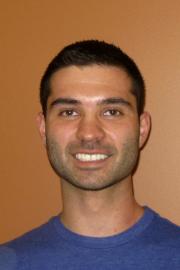
1:50 pm - The Effects of Inducing DNA Damage on Retromutagenesis Utilizing Saccharomyces cerevisiae as a Model System
Alicia James, Senior Capstone Seminar
Our goal in this work was to determine if retromutagenesis is a potential pathway for the acquisition of genetic mutations in microorganisms leading to drug resistance and disease. Retromutagenesis begins with transcriptional mutagenesis (TM) in which damaged DNA causes errors during transcription. This process can result in a population of mutant transcripts that could ultimately result in an altered cellular phenotype. The cell is equipped with mechanisms to combat such DNA damage. However, if the damage is not repaired before replication it can induce a permanent mutation in the cell’s genome, an event known as replicational mutagenesis. When this occurs the mutation is passed along to every subsequent daughter cell, thus completing the cycle of retromutagenesis. The mutation rate for retromutagenesis (RM) experiments utilizing wild type (WT) cells was calculated to be 1.60 E-07 with a low and high confidence level of 8.65E-08 and 2.42E-07 respectively. We hypothesized that increasing the amount of oxidative DNA damage would increases retromutagenesis rates, and we chose to induce damage by exposing cells to UV-A light. Results of these experiments were ultimately inconclusive, and reasons for this outcome will be discussed.

2:30 pm - The Hetero Diels-Alder Reaction of Hydroxyurea Heteropolyenophiles and Cycloheptadienes and Trienes Under Aerobic Copper(II) Catalysis as Potential Triggers for Self-Immolative Polymers.
Joy Murphy, Senior Capstone Seminar
A Diels-Alder reaction done between a carbamoyl-nitroso species and a cycloheptene under aerobic copper(II) catalysis at room temperature can yield bicyclic adduct by [4+2] or [6+2] cycloaddition. Diels-Alder reactions are typically done with reactive dienes containing 5 and 6 membered rings that react in a concerted [4+2] mechanism. The cycloheptatrienes are theorized to react by concerted [6+2] mechanism,1 creating a cycloadduct with a larger bicyclic system than those of the usual [4+2] mechanism with the smaller ring system dienes. The steric constraints of the bicyclic adduct, a 7-Oxa-8-azabicyclo-(4.2.1)-nona-2,4-diene in the case of a [6+2] cycloaddition or a Oxazabicyclo-(3.2.2)-nonadiene in the case of a [4+2] cycloaddition, is theorized to effect the rate of thermal decomposition via retro-Diels-Alder mechanism. This occurs by retrocycloaddition in a temperature controlled, aqueous environment that leads to a hydrolysis of the nitroso species into carbon dioxide, the N-aryl or N-alkylamine, and a NO species .The rate of decomposition is monitored by UV-Vis Spectroscopy, in the presence of a chromophore, or NMR. The rate of thermal decomposition can be compared to the decomposition rates of smaller ring system adducts of [4+2] cycloaddition to determine whether the steric strain of the cycloheptene hetero Diels-Alder adduct causes a significant difference in the temperature and or time of thermal decomposition versus smaller cycloadducts. If these cycloadducts decompose by retrocycloaddition at or near physiological temperature they may have application as thermally activated triggers for pharmaceutical delivery by means of self-immolating polymers in biological systems.

3:10-3:20 - Break
3:20 pm - Porous Iron Anode for Use in Metal-Air Batteries
Hannah Seal, Senior Capstone Seminar
With concerns of global warming and population increase money is being heavily invested in renewable energy sources that are cheap, safe, eco-friendly, and can perform at the same level if not exceed the capabilities of current energy sources. Iron air batteries are lightweight and safe however cannot currently meet the power needs of current technology. We hypothesize that the specific power of iron-air batteries can be increased if the surface area that is accessible to electrochemical activity was increased, this would allow greater access to reduction of iron and easier transportation of current through an interconnected conductive network. This research focuses on utilizing the surface area of the electrochemically active structured carbon nanofoams. These lightweight nanofoams created to have surface areas high surface areas, can support the redox chemistry needed for iron air batteries. The iron attached to the carbon nanofoams as FeOx, can be electrochemically reduced and oxidized between Fe0 to Fe3+ and give more power than an analogues anode at currents between 0.1-1 mA.
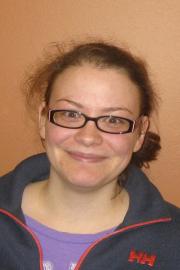
4:00 pm - Electrochemical Regeneration for Catalytic Application of Hantzsch Ester
Julian Banbury, Senior Capstone Seminar
Hydrogen transfer reactions are chemically significant in modelling biological systems. Hantzsch’s ester is a useful hydrogen transfer agent, particularly in the modelling of the transition between NAD+ and NADH. The greatest disadvantage of using the Hantzsch ester in hydrogenation reactions is its poor atom economy, donating only 2 g/mol for its total 253 g/mol. Herein, we attempt to electrochemically regenerate Hantzsch ester for catalytic application.

1:50 pm - Retromutagenesis Of Saccharomyces cerevisiae, Or How I Learned To Love Adaptive Mutagenesis In Yeast
Gracie Wilson, Senior Capstone Seminar
Drug resistance in microorganisms is a rapidly growing medical problem, and understanding mechanisms that contribute to such drug resistance would be a major step in the battle against virulent infections. Using Saccharomyces cerevisiae we investigated adaptive mutation frequencies of wild type and ogg1Δ strains under growth restrictions induced by canavanine. It was hypothesized that mutants compromised in DNA repair would have greater mutation rates. Late growing colonies could potentially be linked to retromutagenesis, where an advantageous DNA mutation transcribed during growth arrest could lead to a protein advantageous enough to allow the cell to overcome its growth restrictions. Through our research and the addition of late clone characterization, we obtained statistically significant data showing an increase in late mutations of ogg1Δ over wild type cells, indicating that incomplete repair mechanisms lead to greater mutations during growth arrest. Additionally, strains harboring RNA Polymerase II (RNAPII) mutations E1230K and E1130G were tested under the same growth restrictions. Preliminary data with these mutant strains show promise in linking transcriptional processes to these mutation events. Our results could ultimately lead to further insight into mechanisms of adaptive mutagenesis, and its contribution to drug resistance and evolutionary pathways.
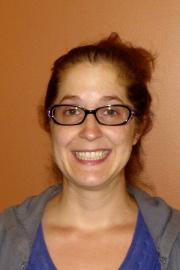
2:30 pm - Quantitative Analysis of Selected Synthetic Musks and Diethyl Phthalate in Women’s Perfumes
Blair Troudt, Senior Capstone Seminar
Women’s perfumes were analyzed for the presence of nitro musks, polycyclic musks, and diethyl phthalate. The compounds of interest have been shown to cause negative health effects at low levels of exposure. The perfume industry is currently regulated only voluntarily, giving perfumes the potential to contain these harmful ingredients. Two internal standards were used in a gas chromatography/mass spectroscopy analysis to determine the concentrations of analytes in the samples. Nitro musks are not present in the selected perfumes, but the polycyclic musks Galaxolide and Versalide were present in 80% of the samples at concentrations ranging from 0.3% to 6% and 0.03% to 1.4% respectively. Diethyl phthalate is present in only 20% of the samples at the levels 0.13% and 0.029%. At these concentrations, the detrimental health effects of these compounds are a real concern, and these findings show a need for further study of perfume constituents.

3:10-3:20 - Break
3:20 pm - Carbon Nanofoams as Scaffolds for Iron-Air Electrodes
Mark Walsworth, Senior Capstone Seminar
In order to maximize the specific power of conventional iron-air batteries, an extreme increase in surface area of the iron electrode is sought. Carbon fiber paper (CFP) is used as a scaffold to build a high surface area carbon nanofoam (CNF). The carbon fiber paper is allowed to cure in a 37.5% resorcinol-formaldehyde (RF) solution and pyrolyzed, leaving a macroporous (pores ~ 1 µm) carbon skeleton as determined through scanning electron microscopy (SEM). The surface area of the CNF is determined through cyclic voltammetry (CV) to be 130±80 m2/g. Rust is deposited on the CNF from potassium ferrate in a strongly basic solution to create a continuous and active surface that can undergo reduction and oxidation. The presence of rust throughout the pore network of the CNF is confirmed through CV and energy dispersive spectroscopy (EDS). Through chronoamperometry and chronopotentiometry, carbon nanofoam electrodes demonstrate increased specific power compared to a non-porous counterpart synthesized through similar methods.
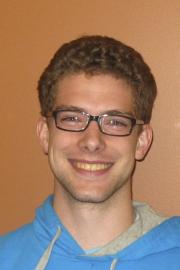
4:00 pm - Investigating the Effects of Glutaraldehyde on Lysozyme Crystal Structure with Atomic Force Microscopy
Jace Mason, Senior Capstone Seminar
Glutaraldehyde, a common cross-linking reagent used in biological sciences, was investigated for its role in stabilizing protein crystals for X-ray crystallography. A model lysozyme protein was used to grow crystals in a phosphate buffer solution at two pH values promoting the formation of a monocyclic tetragonal crystal structure. Optical microscopy and atomic force microscopy were used to study the topology of the lysozyme crystals.
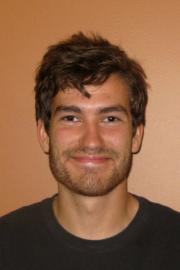
4:40 pm - Synthesis and Decomposition Kinetics of Natural Product-Derived Hetero-Nitroso-Diels-Alder Cycloadducts
Marisa Cufin, Senior Capstone Seminar
In the presence of diene-containing natural products, substituted nitroso-hydroxyureas are oxidized via mild copper(II) catalytic aerobic conditions and are capable of undergoing hetero-Diels-Alder reactions to produce stable adducts. The thermal stability of these adducts has been found to be affected by the character of the nitroso-heterodienophile.
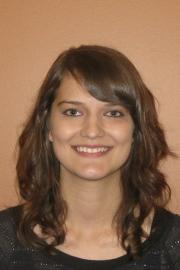
1:10 pm - Iron-Coated Carbon Nanofoams as Electrodes for Next Generation Metal-Air Batteries
Reed Pueringer , Senior Capstone Seminar
A high surface area electrode as the anode material for metal air batteries could potentially be the solution to the struggles associated with their specific power demands. Creation of iron-coated nanofoams was evident in 92% mass gains and visual SEM-EDS imaging while maintaining a conductivity 25.45 ± 5.61 S cm-1. Electrochemical experimentation was used for comparison of geometric energy densities and specific powers between nonporous carbon and 3-D nanofoams. Collecting data at multiple currents showed that at low currents of 0.01, 0.1, and 1 mA, geometric energy densities showed 3-D structures outperforming nonporous structures. At a high current of 10 mA, the nonporous carbon exhibited a higher geometric energy density than 3-D structures. Specific power calculations did not show a significant difference between 3-D and nonporous structures performance at any currents. Future experimentation includes running more samples to verify these results as well as impedance measurements as a potential explanation of the energy density results.
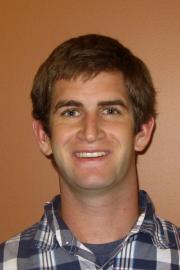
1:50 pm - The Role of the Retromutagenesis Pathway in the Acquisition of Drug Resistance in Saccharomyces cerevisiae
Gavin Nixon, Capstone Senior Seminar
We report the use of a novel assay and replica plate system for the characterization of Saccharomyces cerevisiae that acquired drug resistance to the arginine analogue canavanine. This new technique allowed us to calculate the early mutation rates of clones in a wild type (WT) strain and a strain deficient in a DNA repair glycosylase (ogg1∆), and late mutation frequencies of clones that potentially acquired drug resistance by the Retromutagenesis pathway. Comparison of the late mutation frequencies between the ogg1∆ and WT strains reveal that the ogg1∆ strain experiences a higher rate of mutations per cell in stationary phase (6.96E-07) compared to the WT strain (1.51E-07).

2:30 pm - Functionalized Benzofulvenes: Synthesis from Substituted Indanones and Possible Medicinal Applications
Valerie Lesniak, Capstone Senior Seminar
Functionalized benzofulvenes have potential applications for cancer treatment. Based on predictions from computational modeling, these molecules may have high binding affinities to the active site of thioredoxin reductase, a target for small molecule inhibitors. We optimized a pharmaceutically relevant route from readily available 1-indanone, avoiding heavy metals, cryogenic temperatures, and toxic solvents. Using our optimized route, we synthesized novel benzofulvenes with substituents on the indanone portion of the molecule. We will use this route to synthesize computational target molecules that could inhibit thioredoxin reductase.
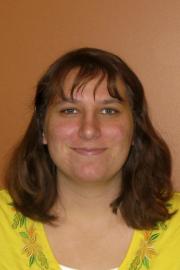
3:10-3:20 - Break
3:20 pm - Investigation of Microphase Separated Dicarboximide-Functionalized Oxanorbornyl Diblock Copolymers Exhibiting Nanostructure
Marisa Adams, Capstone Senior Seminar
Solid-state polymer electrolytes offer a promising alternative to liquid electrolyte supports in lithium ion batteries. Herein, we investigate a diblock system which may offer a nanostructured approach to membrane electrolytes. We have synthesized dicarboximide-functionalized oxanorbornyl diblock copolymers with varying ratios of ethylene oxide (EO)2 and phenyl side groups. Polymerization was conducted under living conditions using a Grubbs third generation catalyst through a ring opening metathesis mechanism. The diblocks were characterized using NMR, GPC, and DSC which shows two glass transition temperatures that correlate with those observed in the phenyl and ethylene oxide (EO)2 homopolymers. AFM of spun cast films will be used to characterize microphase-separated nanostructures, which may be useful in lithium ion conduction. Neutron scattering (BASIS) was used to characterize homo and diblock dynamics and impedance measurements used to quantify lithium ion conductivity of the homopolymer.

4:00 pm - Biochemical Characterization of Truncated Mitochondrial DNA Polymerase Pol β-PAK from Trypanosoma brucei
Alicia Worley, Capstone Senior Seminar
Trypanosoma brucei has two polymerase beta enzymes that participate in mitochondrial DNA replication within its kinetoplast DNA network (kDNA). These two proteins, Pol β and Pol β-PAK, are found to localize to different regions of the kDNA and have different optimal polymerase activity conditions in regards to pH and KCl and MgCl2 concentrations. Within the polymerase region, these proteins are ~30% identical. However, Pol β-PAK additionally contains an unusual N-terminal extension rich in prolines, alanines, and lysines and a short C-terminal tail. A recombinant protein, ∆PAK∆CT, containing the polymerase region of Pol β-PAK but omitting the PAK region and C-terminal tail was utilized to determine whether the functional differences between Pol β and Pol β-PAK could be attributed to these interesting structural features. ∆PAK∆CT was found to be primarily insoluble when expressed in E. coli but could be solubilized in high salt. Additionally, despite being a primarily positively charged protein, ∆PAK∆CT was found to associate with both positively and negatively charged chromatography columns.
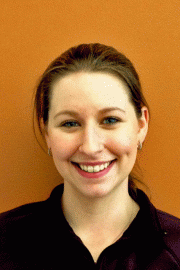
1:50 pm - Yeast Cell Survivability in the Presence of Canavanine
Richard Mackey, Capstone Senior Seminar
The acquisition of drug resistance post treatment of said drug by a bacteria, microbe, or tumor cell is of great public interest. Knowing more about these acquisition processes can lead to better drug therapy treatments for infections and cancerous cell growths. Adaptive mutagenesis occurs in Saccharomyces cerevisiae when selective pressure causes a state of suspended growth. In this research we wanted to know the survival rate of yeast cells in Canavanine.
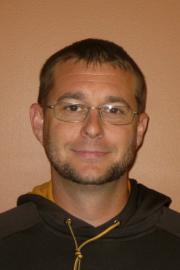
2:30 pm - A Comparison of the Electrochemical Performance of Porous and Non-porous Carbon Electrodes that are Coated with Iron
Marshall McNally, Capstone Senior Seminar
In this study, the specific power of a high surface-area, carbon nanofoam (CNF) that was conformally coated with iron oxyhydroxide (FeOx) is compared to a FeOx-coated, bulk carbon (BC) electrode with low surface area but with a similar chemical composition. Carbon nanofoams were synthesized by infiltrating a resorcinol-formaldehyde monomer solution between the fibers in carbon fiber paper. The samples were pyrolyzed and then coated with FeOx, which was deposited by infiltrating CNFs with a potassium ferrate solution. The FeOx coated CNF (FeOx-CNF) and the FeOx coated BC (FeOx-BC) were electrochemically analyzed as the working electrode in a three-electrode cell using a potentiostat. The FeOx-CNFs were calculated to have a greater energy density than the FeOx-BC at the discharge currents of 0.01, 0.1 and 1 mA cm-1 but a lower energy density at 10 mA cm-1. We attribute this data to the diffusion barrier that was created by having an unintended crust of FeOx that formed on the surface of the FeOx-CNF, formed during the FeOx deposition process. The specific power of the FeOx-CNFs and FeOx-BC were not statistically different at all of the current densities. Impedance measurements displayed on a Nyquist plot showed that the FeOx-CNFs had a higher polarization resistance than the FeOx-BC.
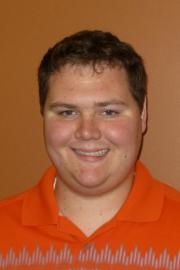
3:10-3:20 - Break
3:20 pm - Effects of Substitution on 1,4-Diphenyl-1,3-Butadiene in the Retro-Hetero-Diels-Alder Reaction
Brent Gwinner, Capstone Senior Seminar
The effects of aryl substitution on (E,E)-1,4-diphenyl-1,3-butadiene in the retro-hetero-Diels-Alder reaction was tested by attempting to synthesize two different substitutions in the para- positions of 1,4-diphenyl-1,3-butadiene: (E,E)-1,4-bis(4-methylphenyl)-1,3-butadiene and (E,E)-1,4-bis(4-methoxyphenyl)-1,3-butadiene. The various dienes were reacted with N-p-nitrophenyl-N’-hydroxyurea under oxidative conditions so the hydroxyurea could form a nitroso heterodienophile which would then carry out the hetero-Diels-Alder reaction. The research goal was to test the rate constants for each of the Diels-Alder adducts and compare the rate of the decomposition reaction under aqueous conditions in order to see the effects various electron donating groups had on the retro-hetero-Diels-Alder reaction. In all of the synthesis reactions, where the substituted group was a methoxy group, the reaction produced no identifiable product. In contrary, when the substituted group was a methyl group, the various reactions all synthesized the desired product.
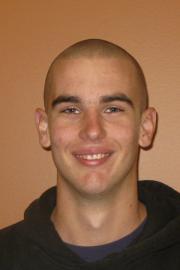
4:00 pm - Effects of Pyridine on Photoluminescence of Differently Shaped Nanocrystals
Victoria Richmond, Capstone Senior Seminar
CdSe nanocrystals have been used in applications such as solar cells and light emitting diodes. We can further understand the role of nanocrystals in these applications by studying the effects that ligands have on the optical properties of the nanocrystal. Ligands control the solubility and photoluminescence efficiency of the nanocrystals. The ligands present after synthesis, the native ligands, are what keep our nanocrystals in solution. We evaluate the effects of different ligands by monitoring the photoluminescence of the nanocrystal as we exchange the native ligands with other ligands such as pyridine. Nanocrystals can be synthesized into many shapes including spheres, rods and belts. We examined if adding pyridine to solutions of CdSe nanocrystals would affect the photoluminescence of nanospheres and nanobelts differently. We found that the nanosphere photoluminescence decreased with increasing concentrations of pyridine. Our preliminary data indicates that the nanobelt photoluminescence was not significantly quenched with increasing pyridine concentration. This indicates that the shape of the nanocrystal influences the ligands interaction with the nanocrystal surface.

1:10 pm - The Synthesis of 1-Phenyl Indene and the Creation of Grignard Reagents with Electron Donating Groups
Austin Erler, Senior Capstone Seminar
Benzofulvenes have been shown to have high binding affinity for various enzymatic active sites; one of particular interest is thioredoxin reductase due to its role in the regulation of reactive oxygen species in cells. A key intermediate in the development of functionalized benzofulvenes are functionalized indenes. The synthesis of 1-phenyl indene from 1-indanone in 2-MeTHF reaching yields of 65% is described. Furthermore, the conversion of electron donating aryl halides to Grignard reagents is described. The electron donating effects of substituent groups make it difficult to generate Grignard reagents that are key to the development of desired benzofulvenes. Due to this, an optimization of Grignard synthesis was performed. It was determined that iPrMgCl•LiCl (i.e., Turbo Grignards) in tetrahydrofuran, rather than 2-MeTHF, was the most effective reagent to generate Grignard reagents containing electron donating groups.

1:50 pm - Synthesis and Decomposition of Novel Hetero-Diels-Alder Adducts from Hydroxyureas and Applications in Self-Immolating Polymers
Alex Wisbeck, Senior Capstone Seminar
The hetero-Diels-Alder reaction can be used to combine a hydroxyurea dienophile with an array of dienes to form N-carbamoyl-3,6-dihydro-1,2-oxazine adducts. Thermolytic decomposition in aqueous conditions measured by NMR or UV-Vis spectroscopy shows that the molecular characteristics of the diene affect the rate of adduct decomposition and offers insight into new ways of thermally-triggered activation of self-immolating polymers.

2:30-3:30 pm - Division of Natural Sciences Poster Session (Morken Atrium)
3:30-3:45 - Break
3:45 pm - Keynote Speaker (Morken 103):
The Chemistry of Newborn Screening for Treatable Genetic Diseases
Michael H. Gelb, Harry and Catherine Jaynne Boand Professor of Chemistry and Biochemistry, University of Washington
Newborn screening for lysosomal storage diseases can catch the diseases early in life when treatment options work best. We have developed novel chemistries and assays for newborn screening of lysosomal storage diseases. The assays are used worldwide in newborn screening labs. The assays make use of synthetic organic chemistry to design reagents, and tandem mass spectrometry for assay readout. The talk will go from the research lab to the clinic and to market.



Social Media